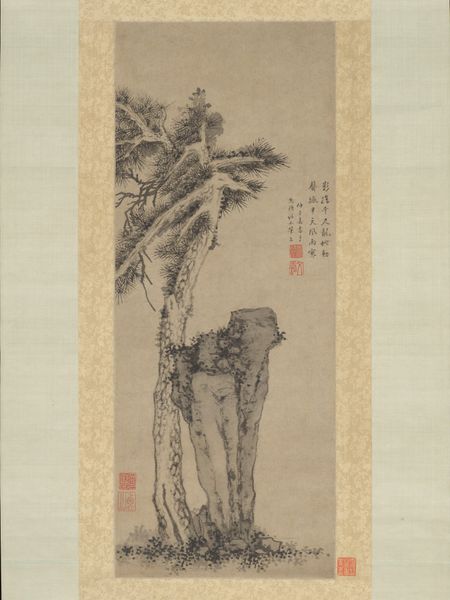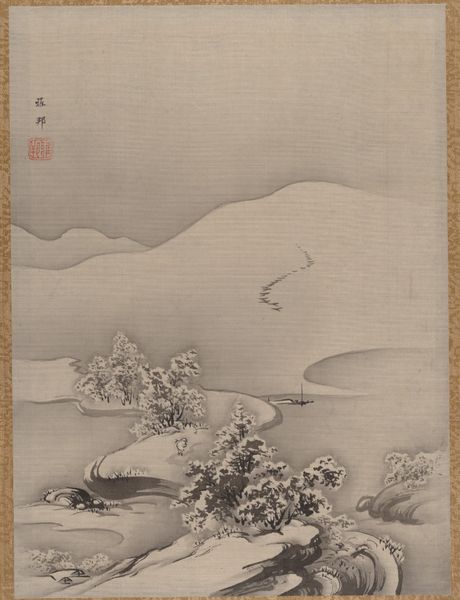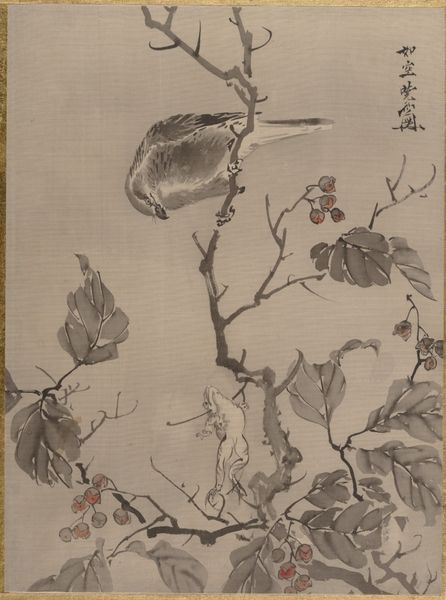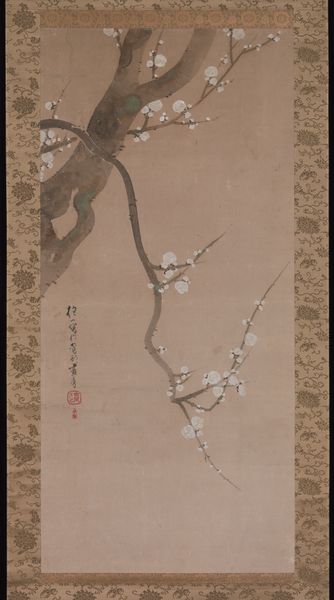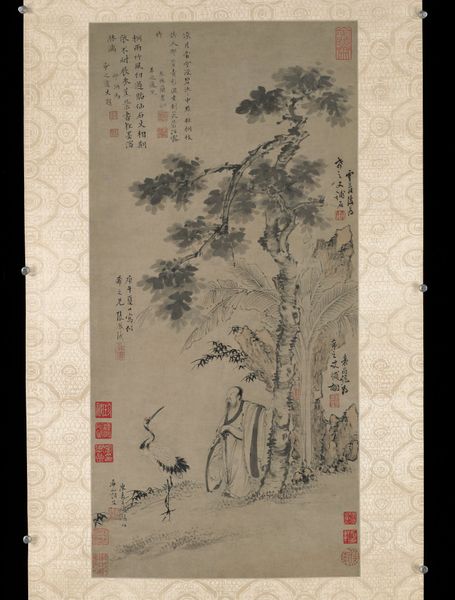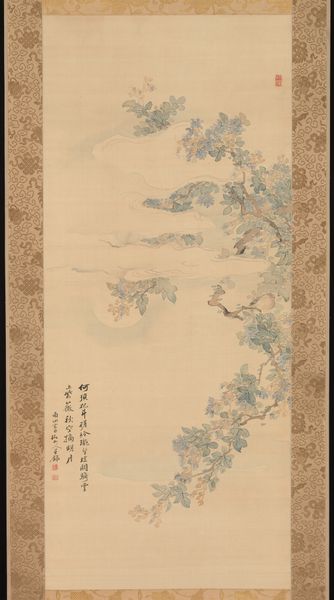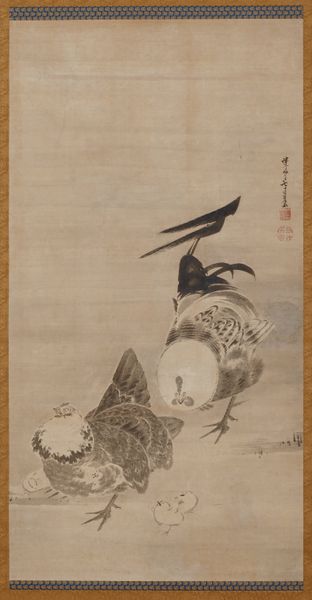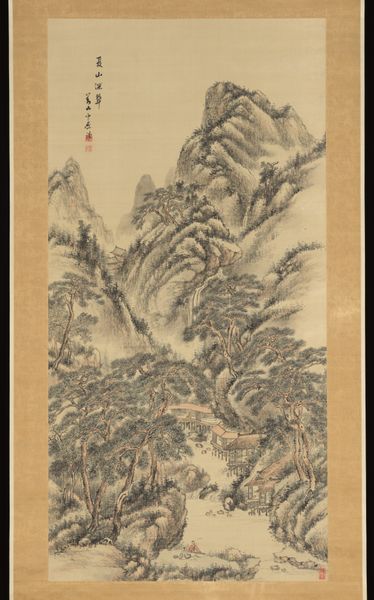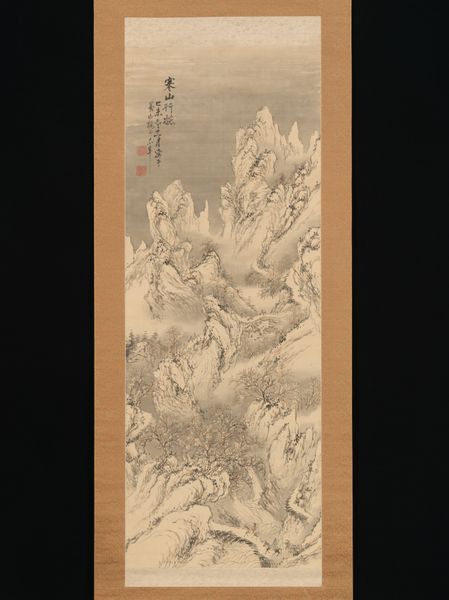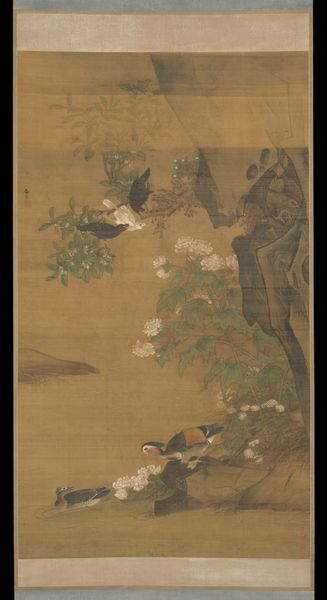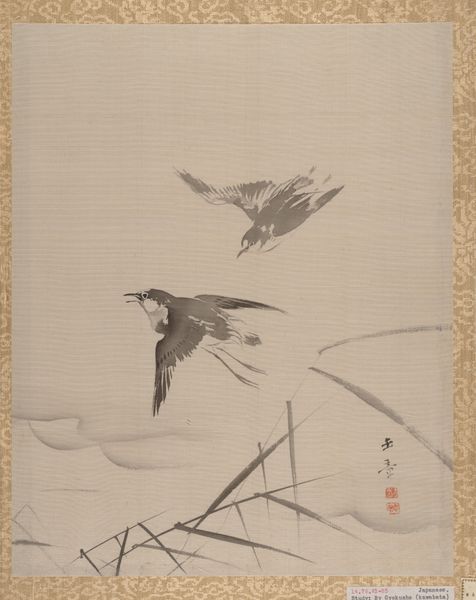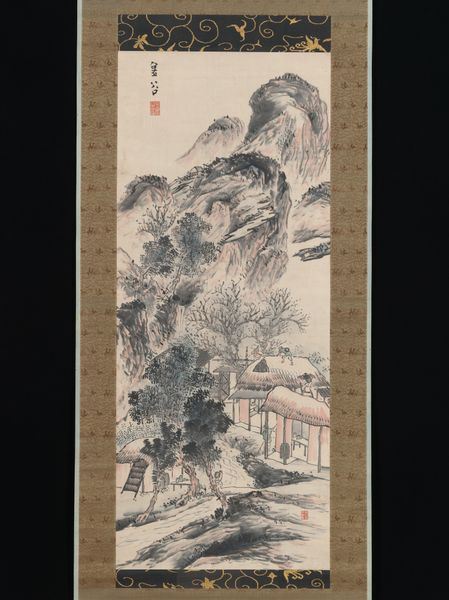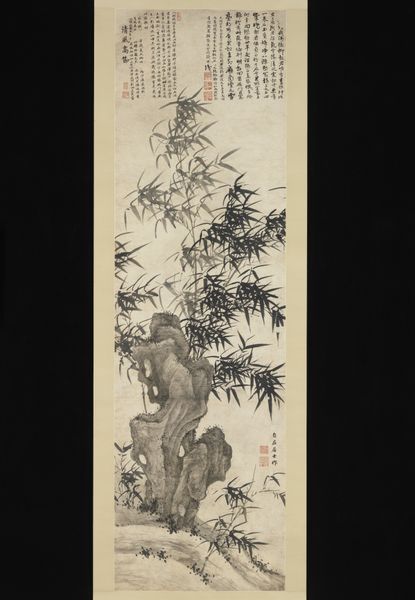
drawing, painting, ink
#
drawing
#
ink painting
#
painting
#
asian-art
#
landscape
#
ink
#
orientalism
Dimensions: Image (each): 47 1/2 in. × 20 in. (120.7 × 50.8 cm) Overall with mounting (each): 73 3/8 × 25 3/8 in. (186.4 × 64.5 cm) Overall with knobs (each): 73 3/8 × 27 5/8 in. (186.4 × 70.2 cm)
Copyright: Public Domain
Taihō Shōkon rendered "Bamboo in Snow" with ink on paper in 18th-century Japan. The bamboo, dusted with snow, is a potent symbol deeply rooted in East Asian culture. It represents resilience, integrity, and the ability to withstand adversity – virtues highly esteemed in Confucian thought. We can trace similar symbolic use of bamboo through centuries of Chinese and Japanese art, poetry, and garden design. Recall the Song dynasty paintings where bamboo signified the ideal of the virtuous scholar. Yet, observe how the snow transforms this symbol. Snow, often associated with purity and renewal, blankets the bamboo, imbuing it with a sense of serene endurance. This juxtaposition evokes a powerful psychological resonance, suggesting that even in the face of life’s metaphorical winters, one can maintain inner strength and moral rectitude. It's a theme that resurfaces across cultures, a testament to the enduring human quest for meaning and fortitude in a transient world.
Comments
No comments
Be the first to comment and join the conversation on the ultimate creative platform.
